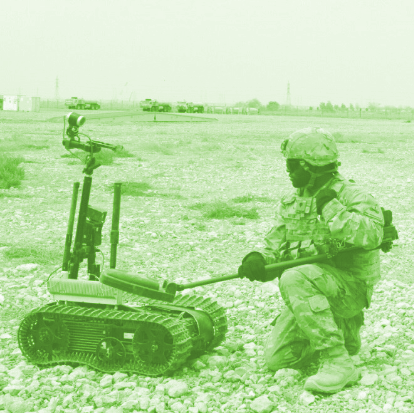Robot emotion assessed
 New research shows that soldiers have to care about robots they work with, but not too much.
New research shows that soldiers have to care about robots they work with, but not too much.
It is increasingly common to use robots in war zones to examine and disarm hazards or recover objects, because the loss of a robot is a far more acceptable outcome than the death of a soldier.
But as robots become valuable members of the team, there is a tendency to treat them like colleagues rather than machines.
New research has explored these connections and their impact on team efficiency and productivity on the front-line.
The study found that for robots to be fully integrated within a human-machine team (HMT), they first must be accepted as teammates. To facilitate this, a lot of work has been done over the years to make robots more ‘human-like’ by altering their physical characteristics and capabilities.
While humanising robots strengthens the working relationships between soldiers and their robots, it also inflates the value of the robot team members in the minds of military personnel, leading to an increased emotional response when the robot is put under stress.
The study showed that teams working with a personified robot were 12 per cent less likely to put their robot at jeopardy of destruction compared to teams working with a non-personified robot, and that they were more sensitive to the robot’s health and the possibility of seeing the robot ‘killed’ in action.
This is the first time that research has measured how actions can be altered by empathy when potential harm is induced in a simulation.
University of South Australia Professor of Human Computer Interaction, Professor Mark Billinghurst, says the results show first-hand how emotional connections can impact decision making in the field.
“We have evidence to show that teams working with a personified robot are significantly more mindful about limiting damage and harm towards it – but this can have significant consequences,” Prof Billinghurst says.
“Participants who limited their use of robots or chose not the use the robots had a similar overall achievement to the teams that did, the result of an increased level of self-sacrifice in the form of working harder to gain the same result.
“Rather than sacrificing the robot, participants who were working with a personified robot had to increase their workloads and were willing to take more personal risks and would stop before putting the robot at risk – impacting their decision making under pressure.
“Such hesitation and having an empathic response in these circumstances could have dangerous consequences for military personnel.”








 Print
Print